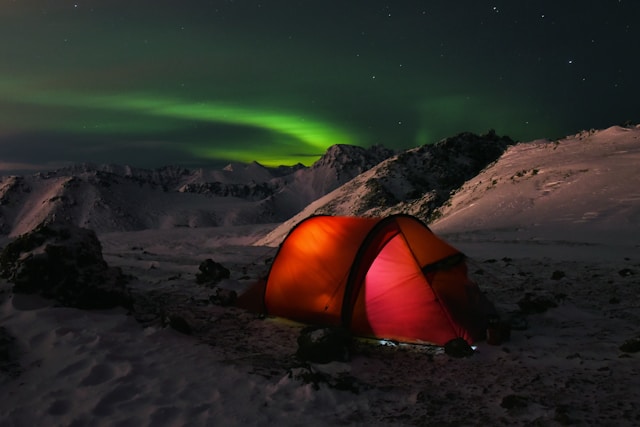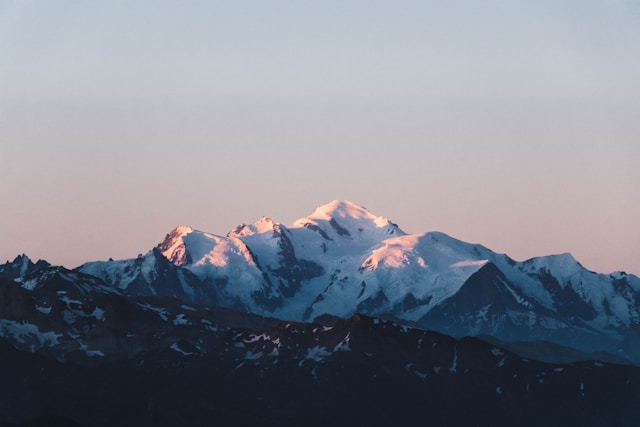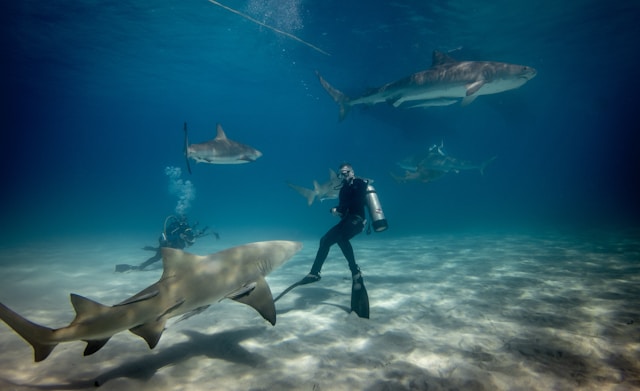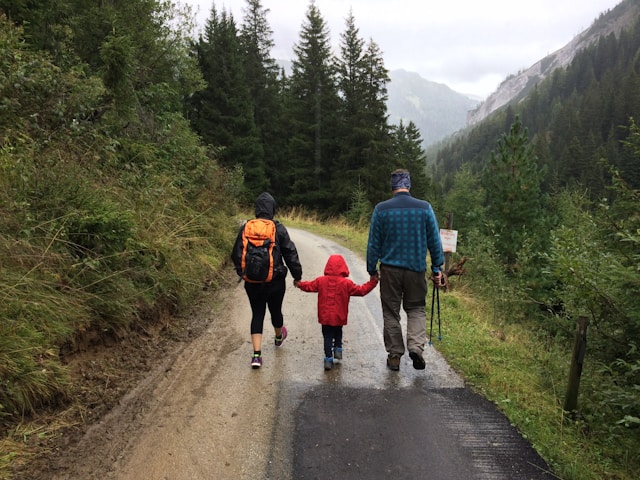Winter camping at -30°C (-22°F) is not for the faint of heart—but for the adventurous soul, it’s one of the most rewarding experiences you can have in the great outdoors. Picture a frozen wilderness, the sound of snow crunching beneath your boots, and a crystal-clear sky ablaze with stars. If you’re ready to embrace extreme cold and come out stronger on the other side, this guide will give you everything you need to survive—and thrive.
Why Camp in -30°C?
Winter camping in extreme cold offers solitude, pristine landscapes, and the challenge of pushing your physical and mental limits. At such temperatures, the environment becomes a true test of preparedness and resilience. It’s not just a trip—it’s an expedition. Whether you’re seeking peace, adventure, or photography opportunities, camping in -30°C brings unmatched rewards.
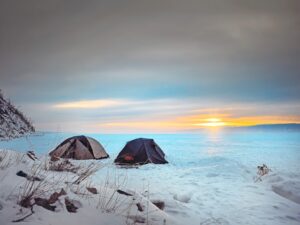
Essential Gear for Sub-Zero Winter Camping
1. Four-Season Tent
Choose a high-quality four-season tent with strong poles and steep sides to shed snow. Make sure it has a vestibule for gear storage and enough ventilation to reduce condensation.
2. Sleep System Rated for -40°C
Your sleeping system should include:
-
A sleeping bag rated for -40°C or colder (down is lighter, but synthetic holds up better when wet)
-
A sleeping bag liner for added warmth
-
Two insulating sleeping pads: one foam pad and one inflatable with an R-value of 5+
3. Proper Clothing Layers
Layering is your life-saver at -30°C:
-
Base layer: moisture-wicking merino wool or synthetic
-
Mid layer: fleece or insulated jacket
-
Outer layer: waterproof and windproof shell
-
Insulated layer: down or synthetic puffy jacket
-
Accessories: mittens (not gloves), balaclava, thermal hat, neck gaiter, and wool socks
4. Insulated Footwear
Wear waterproof, insulated winter boots rated for at least -40°C. Gaiters help prevent snow from entering your boots.
5. Cooking Equipment
Choose a liquid fuel stove (e.g., MSR WhisperLite) as canister stoves fail in extreme cold. Bring an insulated cozy to keep meals hot and a windscreen for efficient cooking.
Safety and Preparation Tips
1. Know the Risks of Hypothermia and Frostbite
Understand the early signs:
-
Hypothermia: shivering, confusion, slurred speech
-
Frostbite: numbness, pale or waxy skin, tingling
Carry an emergency bivvy and hand warmers, and never ignore cold-related symptoms.
2. Plan and Test Your Gear
Before heading into the wild, test all your gear in less severe conditions. Know how to set up your tent with gloves on, how your stove behaves in cold, and how long your batteries last.
3. Pack High-Calorie, Easy-to-Prepare Food
You’ll burn 4,000–6,000 calories per day. Ideal foods include:
-
Freeze-dried meals
-
Oatmeal with nuts and dried fruit
-
Cheese, jerky, energy bars, chocolate
Eat warm meals and snacks throughout the day to maintain body heat.
4. Melt Snow for Water
Always boil snow to purify it. Pack a wide-mouth insulated bottle to prevent freezing, and sleep with it in your bag to keep it from freezing overnight.
Setting Up Camp in Extreme Cold
1. Pick the Right Spot
Choose a site sheltered from wind and avalanche-prone slopes. Flatten the snow with snowshoes or skis and let it settle before pitching your tent.
2. Pitch Your Tent Efficiently
Time and dexterity are limited in extreme cold. Practice beforehand so you can pitch your tent quickly. Use snow stakes or bury deadman anchors.
3. Create a Cold Sink
Dig a small trench inside your vestibule or tent entrance. Cold air will settle there, keeping the sleeping area slightly warmer.
Staying Warm at -30°C: Pro Tips for Winter Camping
When temperatures plummet to -30°C (-22°F), staying warm isn’t just about comfort—it’s about survival. Even the smallest mistakes in layering, hydration, or camp setup can have serious consequences. Here are expert-tested tips to keep you safe, warm, and energized throughout your winter camping adventure.
1. Master the Art of Layering
Proper layering traps warm air and allows you to regulate heat as needed:
-
Base Layer: Use merino wool or high-performance synthetics to wick moisture away from your skin. Avoid cotton—it holds moisture and speeds up heat loss.
-
Mid Layer: Fleece or insulated synthetic jackets provide a breathable buffer of warmth.
-
Outer Layer: A waterproof, windproof shell protects you from wind chill and moisture.
-
Down or Synthetic Puffy Jacket: Use this during rest stops or inside your sleeping bag for extra warmth.
Pro tip: Always carry an emergency down vest in your pack for unexpected temperature drops.
2. Keep Your Core Warm to Keep Extremities Warm
Your body prioritizes warming the core (heart, lungs, and brain), so cold hands or feet often signal you’re not warm enough overall. Before layering up gloves or socks, focus on warming your torso:
-
Do squats or pushups before putting on thick gloves or crawling into your sleeping bag.
-
Eat a hot, fatty snack before sleeping (like peanut butter or cheese) to fuel internal heat production overnight.
3. Double Up on Socks (the Right Way)
Layering socks can help, but only if done properly:
-
Inner sock: Thin moisture-wicking liner (merino or synthetic)
-
Outer sock: Thick insulating wool sock
Avoid tight boots or socks that cut circulation—this will actually make your feet colder. Loosen your boots slightly at night if you’re sleeping with them on.
Bonus tip: Bring a third pair of socks exclusively for sleeping to ensure your feet stay dry and warm.
4. Choose Mittens Over Gloves
Mittens keep fingers together and trap more heat. Layer mittens like this:
-
Liner glove for dexterity (you can keep them on while handling gear)
-
Insulated mitten shell (down or synthetic)
-
Waterproof over-mitten if snow is wet or it’s actively snowing
Sleep with your mittens inside your sleeping bag to prevent freezing and stiffness the next morning.
5. Warm Your Sleeping Bag Before Getting In
Jumping into a cold sleeping bag is miserable and inefficient. Instead:
-
Do jumping jacks or a short burst of cardio before entering your bag to raise your internal temperature.
-
Add a hot water bottle (Nalgene bottle with boiling water wrapped in a sock) to the foot of your bag.
-
Use a bag liner (fleece or thermal) to boost insulation by 5–15°C and keep your sleeping bag cleaner and drier.
6. Protect Electronics and Batteries from the Cold
Cold destroys battery life. Store your phone, GPS, headlamp, and power bank:
-
Inside your sleeping bag at night
-
In interior pockets of your jacket during the day
-
Use lithium batteries—they perform better in cold than alkalines.
7. Stay Hydrated to Stay Warm
It may sound counterintuitive, but dehydration leads to cold extremities. Your body needs water to circulate blood efficiently and maintain warmth.
-
Melt snow for water and drink warm liquids often
-
Avoid alcohol—it impairs thermoregulation
-
Add electrolytes to warm water to maintain hydration balance
8. Fuel Your Body with High-Calorie Foods
Food is fuel. Your body burns extra calories just to maintain heat at extreme cold:
-
Eat high-fat, high-protein snacks (cheese, trail mix, jerky)
-
Keep a “midnight snack” ready in your sleeping bag pocket to eat if you wake up cold
-
Never go to bed hungry—your metabolism will have no fuel to generate heat
9. Insulate from the Ground—Double or Triple It
Most body heat is lost downward. Always use two sleeping pads:
-
One closed-cell foam pad (directly on snow)
-
One inflatable pad with high R-value (5+ recommended)
You can also add:
-
A mylar blanket between pads
-
Pine boughs or a DIY snow bench to elevate your sleep platform
10. Avoid Sweating—Moisture Is Your Enemy
It’s easy to overdress while active and sweat inside your gear. Wet clothing is deadly at -30°C.
-
Dress in layers and remove mid-layers when hiking or hauling gear
-
Vent your shell jacket to allow moisture escape
-
Dry your base layer overnight by wearing it to bed or placing it inside your sleeping bag
Pro tip: Carry a lightweight “active layer” (like a windshirt) for uphill sections and swap to insulation when you stop.
Mindset and Mental Fortitude
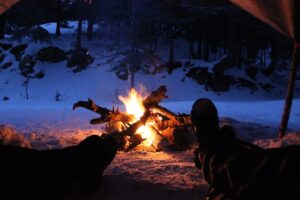
Winter camping at -30°C tests not only your gear but your mental endurance. Be patient, stay organized, and maintain a positive mindset. Break camp tasks into small goals, celebrate progress, and keep morale high with a hot drink or good conversation.
Emergency Preparedness
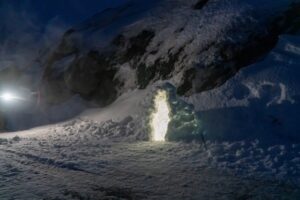
-
Always carry a GPS or satellite communicator (like a Garmin inReach)
-
Let someone know your exact route and return time
-
Know how to build a snow shelter (quinzee or trench) in case of emergency
-
Have a firestarter kit, extra fuel, and emergency rations
Leave No Trace in Winter

Respect the fragile winter environment:
-
Pack out all waste, including food scraps
-
Use biodegradable soap and avoid contaminating water sources
-
Don’t damage live trees or vegetation
Start planning your next adventure today! Click here for a guide on how to do it.

